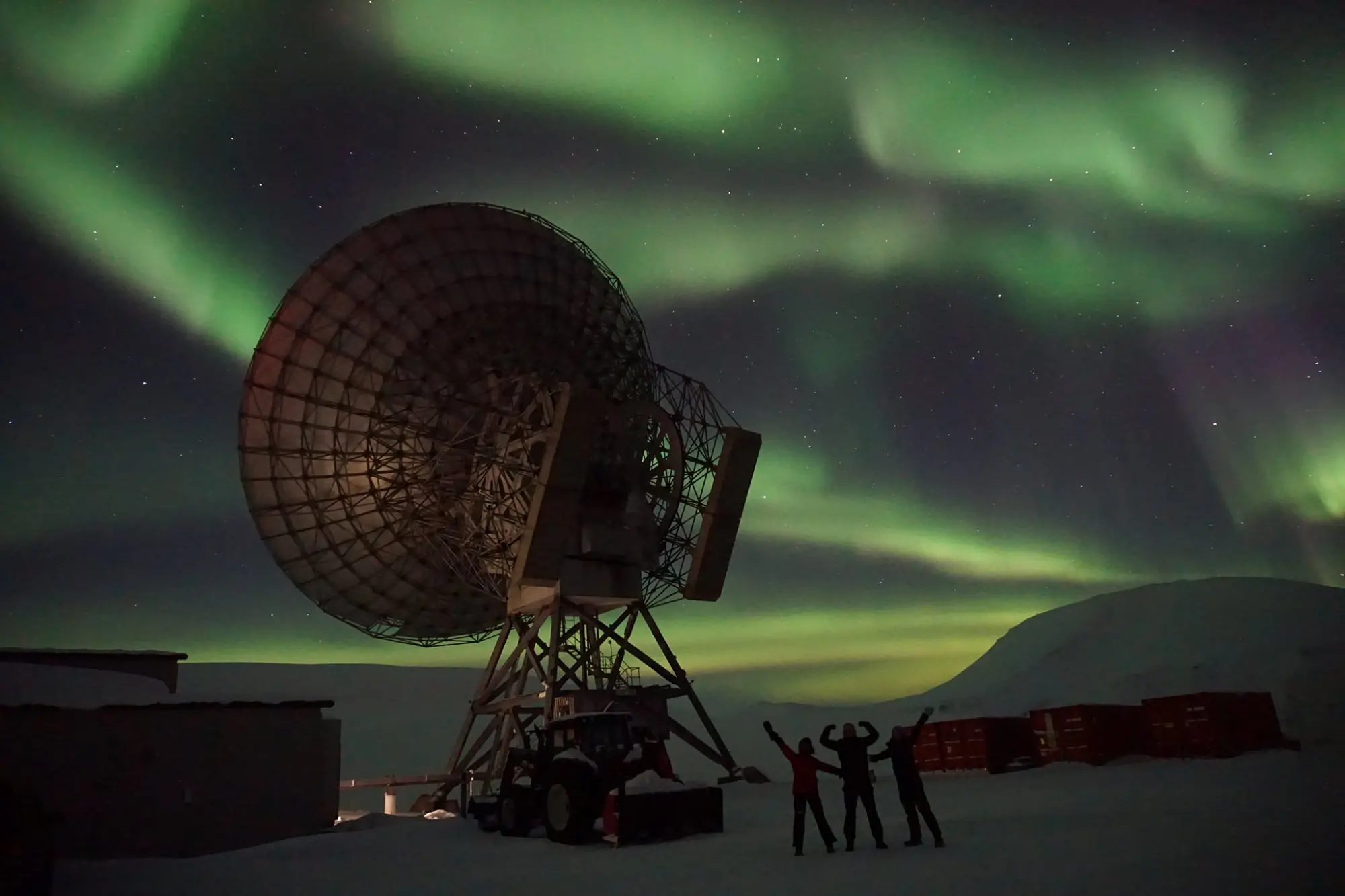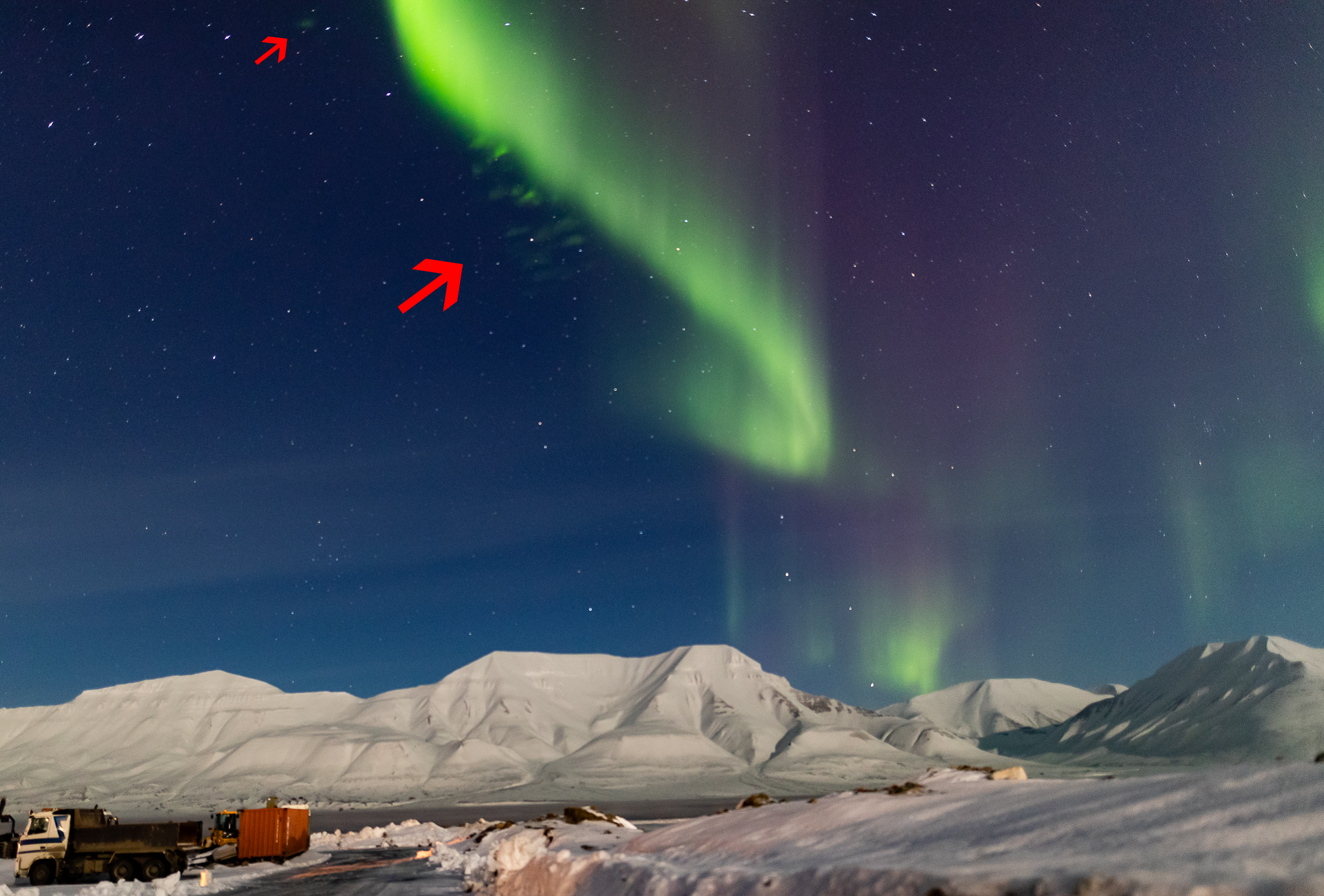Scientists and local community explore new mystery aurora together
In a new project supported by the Research Council of Norway, aurora scientists and enthusiasts come together to join forces.

Katie Herlingshaw giving at talk to Svalbard Guide Association. Photo: Maria Philippa Rossi/UNIS
Katie Herlingshaw has been living in Svalbard for seven years. Like so many others, she was just supposed to stay a couple of months, but years on she’s still counting.
Herlingshaw is from Middlesbrough in England and became obsessed with space already as a child. She loved sitting in the garden with her telescope, finding planets, star clusters and galaxies.
– I would wake up my little brother at 2 AM and get him to sit outside with me in a sleeping bag, watching meteor showers and trying to take photos of the shooting stars.
Herlingshaw studied Astrophysics and the University of Leicester, but the transition to studying stars took some of the charm out of space.
– The magic of all the cool space stuff got suffocated under layers and layers of equations, assignments, exams and mandatory courses.
She laughs and continues.
– Don’t get me wrong! I learned a lot during the university years, but we never went outside to look at the stars once in the four years of studying.

Aurora is best in real life. Here from underneath the EISCAT radar at the Breinosa mountain, 12 kilometres from Longyearbyen. Photo: Katie Herlingshaw
An epiphany of galactic proportions
Herlingshaw was visiting Kiruna in northern Sweden in 2013, and the first night she saw a faint, green band in the sky. The next evening the northern lights were strong and danced across the whole sky.
– I took a thousand photos. I thought it was amazing.
The experience in Kiruna led her to become an aurora researcher in Svalbard, where she has since seen a lot of northern lights. And this brings Herlingshaw onto her next project.
A new type of Aurora called “fragments” were recently discovered over Svalbard.
– The new features are small blobs or fragments that you can see in some images. They are unlike normal aurora and are not caused by tiny parts of the Sun hitting the earth’s atmosphere. In fact, we don’t know what causes them at all, she explains.
In other parts of the world there is good cooperation between aurora scientists and aurora photographers, and they work together to collect images of the abnormal aurora and try to find out where it comes from.
Herlingshaw hopes to do something similar in Longyearbyen.
Citizen science
During the Open Day at UNIS in September, Herlingshaw gave a talk on the new aurora. The very next day she had an email from one of the enthusiastic northern light photographers in town, Sophie Cordon.
– Sophie had started looking through years of her northern light photo archives and was excitedly emailing stunning examples of fragments, one after the other, Herlingshaw says enthusiastic.
Herlingshaw was contacted by several people, even a radar engineer at EISCAT, who’s been watching aurora for 10 plus years, who said he had never seen this type of aurora before. Even people from different countries got in touch, confirming fragments can be seen in other places and giving us our first observations from Greenland.
Herlingshaw urges photographers who want to help with locating the fragments to make sure the time stamp on their cameras is accurate.
– If we know the correct time, we can use our other instruments at the observatory to find the same fragments and find out more information about them.
For now, Herlingshaw’s priority is to build a community with the locals and plan group observation nights.
In November, she will give a talk at the Artica initiative Lantern Lectures. Herlingshaw has also created a Facebook group and blog where the locals can learn more and share their experiences. Herlingshaw hopes it will trigger people to go out and look for Aurora together.
– You don’t have to be a pro Aurora photographer to join, you just have to be interested in learning more. When it’s cold and dark it’s nicer to go out with a group, than just by yourself and try to look for Aurora, she says.

Shortly after describing the phenomenon during the UNIS Open Day in September, Herlingshaw received the first photos of Aurora fragments from one of the photographers in town. Photo: Sophie Cordon
Where to find the aurora?
Unis is on the forefront of developing aurora forecast tools, and the latest is The Aurora Forecast Rocketeer. It’s a tool to track down where the aurora is located in the sky from any location on the planet. The app renders earth in 3D with rotation and scaling at your fingertips.
An aurora compass is included that shows where the auroral oval, the moon and the sun are located as you look up at the sky from your location. The phase and age of the moon is also visualized in the compass.
Developer and head of the Kjell Henriksen Observatory, Fred Sigernes, says that the app is easy to use with no advanced menus.
– The main focus is on auroral forecasting using only your phone location sensor. A new feature is also virtual space travel by rocket to other planets in our solar system, Sigernes explains.
Did young Herlingshaw know that she in the future would be able to travel to outer space through her mobile phone to watch aurora on other planets? Probably not!
And her curiosity and devotion to learn more about what goes on in space above us might have been triggered by exactly that.

Katie Herlingshaw during a talk she gave for the Svalbard Guide Association. With easy available online tools, everyone can monitor the Aurora forecast and see when the magic most likely will happen. Photo: Maria Philippa Rossi/UNIS
PhD Position Available
Under the Researcher Project for Young Talents funding call from the Research Council of Norway, Herlingshaw has received funding for the aurora project. A part of the project is a PhD position in Geophysics, with application deadline November 12.